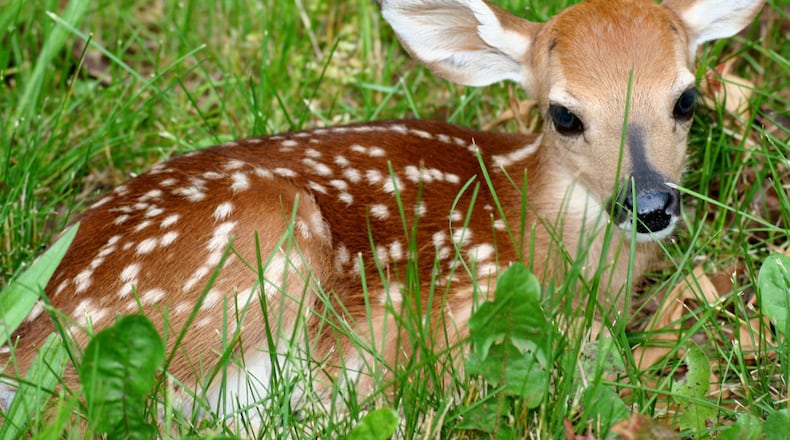On a summer evening, few scenes in nature are sweeter than a mother white-tailed deer cautiously leading a fawn or two into a meadow to graze and perhaps frolic a bit.
Baby deer are born in Georgia between May and August with a peak in June, so fawns born early in the season already are appearing with their mothers. As summer progresses, more fawns will be coming out after a month or so of hiding — mostly alone and perfectly still — in grassy beds.
During a fawn’s first month, a mother (doe) spends very little time with her baby, hiding it for hours on end in tall grass and other vegetation and briefly returning to nurse it only four or five times per day. The tactic helps keep scent levels very low so predators such as coyotes and bobcats are not attracted to the newborn, which weighs 4-8 pounds at birth.
A doe mother, in fact, goes to great lengths to help her baby avoid detection. When she returns to nurse the fawn, she quickly licks it all over to remove its scent. She also licks its genital areas to coax it to urinate or defecate, and then removes the waste. Occasionally, she may move the baby to a new bedding area.
Helping protect the fawn, too, are its numerous white spots on its brown coat. Resembling dappled beams of sunlight streaming down through the trees, the spots effectively camouflage the little deer.
After about a month, baby deer begin accompanying their mothers at all times, coming out with them to forage on grass and other plants and gambol and scamper about. They also will continue to nurse for about three months, after which they will be weaned. Even so, they may stay with their mothers for a year or so, although their protective white spots will be gone by then.
By the way, Georgia’s Department of Natural Resources reminds folks that if they come across what appears to be an “abandoned” fawn, leave it alone. The mother likely is nearby. Also, it’s illegal to keep wildlife without a permit in Georgia.
IN THE SKY: From David Dundee, Tellus Science Museum astronomer: The moon will be full on Wednesday and will appear as the year’s largest full moon. Rising in the east are Mercury (very low) just before dawn; Venus, a few hours before sunrise; Mars, around 2 a.m.; Jupiter, around midnight; and Saturn, a few hours after dark. Saturn will appear near the moon on Friday evening (July 15).
Charles Seabrook can be reached at charles.seabrook@yahoo.com.
About the Author
Keep Reading
The Latest
Featured


